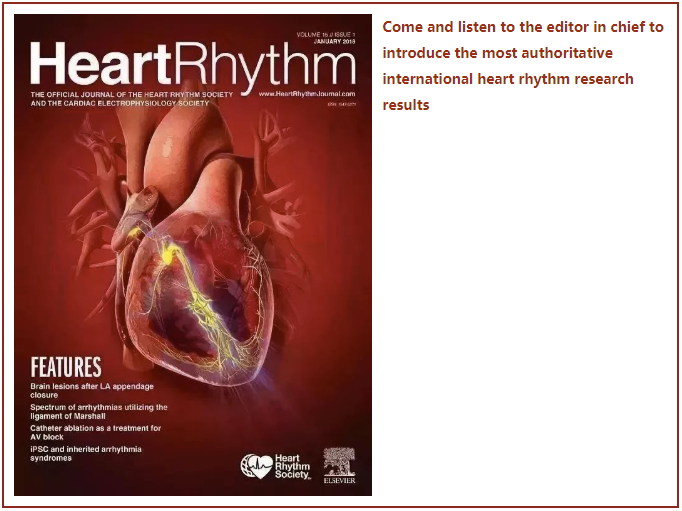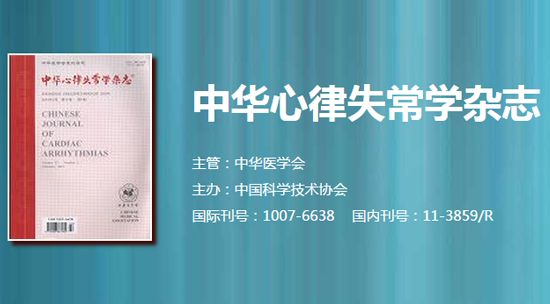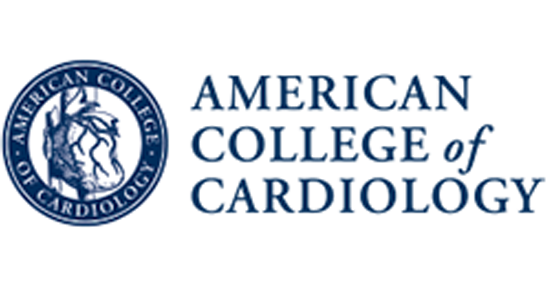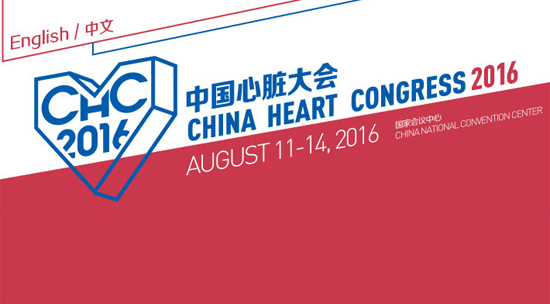HeartRhythm主编—陈鹏生教授语音速递(十二月刊 英文版)


Peng-Sheng Chen
Hello, this is Dr. Peng-Sheng Chen, the Editor-in-Chief of Heart Rhythm. The December 2022 issue of the journal is a focus issue on devices.
The first paper is “His Bundle Pacing vs Biventricular Pacing Following Atrioventricular Node Ablation in Patients with Atrial Fibrillation and Reduced Ejection Fraction: A Multicenter, Randomized, Crossover Study. The ALTERNATIVE-AF trial.” Thirty-eight patients completed the 2 phases and were included in the crossover analysis. A significant improvement in LVEF was observed with His bundle pacing compared to biventricular pacing. Significant improvements in left ventricular enddiastolic diameter, New York Heart Association functional class, and B-type natriuretic peptide level were observed with both pacing modalities compared with baseline, whereas no significant differences were observed between HBP and BVP. The authors conclude that HBP delivers a modest but significant improvement in LVEF in patients with persistent AF, impaired ventricular function, and narrow QRS duration post-AVN ablation compared with BVP.
The second article is “The need for a subsequent transvenous system in patients implanted with subcutaneous implantable cardioverter defibrillator”. A total of 1509 patients were enrolled. Over 26.5 months, 155 (10.3%) and 144 (9.3%) patients experienced appropriate and inappropriate device therapies, respectively. Forty-one patients (2.7%) required a transvenous device. Body mass index >30 kg/m2 and chronic kidney disease were associated with a need for a transvenous device. The authors conclude that a low rate (2.7%) of conversion from S-ICD to a transvenous device was observed at follow-up, with the need for antibradycardia pacing, ATP, or CRT being the main reason.
Up next is “Cardiac Resynchronization Therapy Optimization in Nonresponders and Incomplete Responders Using Electrical Dyssynchrony Mapping”. The authors studied 39 patients with underlying left bundle branch block or interventricular conduction delay who had an LV ejection fraction of ≤40% after receiving CRT and had significant electrical dyssynchrony. The cardiac resynchronization index (CRI) was defined as the percent change in QRS area under the curve compared to native conduction. Electrical dyssynchrony maps depicted CRI over the wide range of settings tested. With this approach, CRI increased from 49.4% to 90.8%. CRT optimization of electrical dyssynchrony using this novel electrical dyssynchrony mapping technology significantly improves LV systolic function, LV end-systolic volume, and mechanical dyssynchrony. This methodology offers a noninvasive, practical clinical approach to treating nonresponders and incomplete responders to CRT.
Coming up is “Feasibility of leadless left ventricular septal pacing with the WiSE-CRT system to target the left bundle branch area: a porcine model and multi-center patient experience”. Two pigs underwent electrode implantation on the LV septum with subsequent anatomical and histological examination. Eight patients underwent implantation of the WiSECRT system with the deployment of the electrode on the LV septum via an interatrial transseptal approach. Deployment of the electrode on the LV septum was successful in both animals. Histological examination demonstrated electrode tines close to Purkinje tissue. WiSE-CRT implantation with an LV septal electrode was successful in all patients. Biventricular capture was confirmed, with a significant reduction in QRS duration. The authors conclude that leadless LV septal pacing with the WiSE-CRT system to target the left bundle branch appears feasible.
The next paper is “New criterion to determine left bundle branch capture on the basis of individualized His bundle or right ventricular septal pacing”. Patients were enrolled if 12- lead surface electrocardiograms of LBBP, LV septal pacing, temporary His bundle pacing (HBP), and right ventricular septal pacing (RVSP) were recorded during the procedure, with the leads placed in the basal midseptal region. A total of 105 consecutive patients were included. Patients with LBBP showed significantly shorter LV activation time than did those with LVSP. In 3 patients with normal cardiac function, a cutoff value of ΔLVAT1 > 12.5 ms showed 73.9% sensitivity and 93.3% specificity to confirm LBB capture. In patients with HF, a cutoff value of ΔLVAT1% > 9.8% exhibited great accuracy for LBB capture. The optimal value of ΔLVAT2% for differentiating LBBP from LVSP was 21.2%. The authors conclude that temporary HBP and RVSP can serve as references to confirm LBB capture in an individualized fashion in patients with or without HF.
Up next is “Infection in Subcutaneous Implantable Cardioverter Defibrillator Patients: Results from the S-ICD Post-Approval study”. The S-ICD Post Approval Study is a US prospective registry of 1637 patients. Infection was observed in 55 patients (3.3%), with 69% of infections occurring within 90 days and a vast majority (92.7%) within 1 year of implantation. Late infections more likely involved device erosion; no infections occurred after year 2. The authors conclude that infection rates in the S-ICD Post Approval Study were similar to other SICD populations and not associated with systemic blood-borne infections. Late infection (>1 year) is uncommon and associated with system erosion. A high-risk infection cohort can be identified that may facilitate preventive measures.
Up next is “Strategies and Outcomes of Patients with Severely Reduced Ejection Fraction Undergoing Transvenous Lead Extraction: A Single Center Experience”. Between January 2008 and January 2022, the authors performed TLE in 245 patients with stage D heart failure, severely reduced ejection fraction, and class I or II indications for extraction. The results show that in patients with severely reduced ejection fraction, clinical success was high (97.6%) and mortality was low (5.3%). The authors conclude that lead extraction in patients with severely reduced ejection fraction can be performed safely and effectively. Adopting a few simple steps, including the early initiation of LV support, can overcome myocardial impairment in patients who decompensate.
Coming up is “Optimizing atrial sensing parameters in leadless pacemakers: atrioventricular synchrony achievement in real world”. Consecutive patients undergoing Micra AV implantation between June 2020 and November 2021 were studied. Thirty-one patients who remained in VDD mode were studied, and all of them required manual reprogramming. AV synchrony significantly increased from 68.7% ± 14.7% at 24-hour follow-up to 83.9% ± 7.4% at 1-month visit (P = .001). A total of 2,291,953 Holter-recorded cardiac cycles were analyzed. Median AV synchrony during 24-hour daily activities was 87.6%. The authors conclude that high rates of AV synchrony can be achieved in real-world patients undergoing leadless pacing. Manual reprogramming of the atrial sensing parameters is essential to optimize mechanically sensed atrial tracking.
The next paper is “The Electrophysiological Characteristics and Possible Mechanism of Bipolar Pacing in Left Bundle Branch Pacing”. A total of 65 patients who strictly met the criteria for left bundle branch capture were enrolled. Four distinct morphologies and 3 different types of transitions during bipolar pacing threshold testing were identified. The authors labeled the 4 types of morphologies as nonselective (NS)-bipolar-left bundle (LB), NS-cathodal-LB, selective (S)-cathodal-LB, and left ventricular septal-cathodal. Except left ventricular septalcathodal, the other 3 types had a short and constant V6 R-wave peak time. The paced QRS complex was the narrowest in nonselective-bipolar-LB rather than in nonselective -cathodal-LB. The authors conclude that with a higher output on bipolar pacing, NS-bipolar-LB capture had the shortest V6 R wave peak time, V1 R wave peak time, and P-QRS. S-cathodal-LB capture had the longest V1 R wave peak time and P-QRS complex.
These original articles are followed by a Research Letter titled “Masked right bundle branch conduction delay pattern during left bundle branch pacing”. RBB delay pattern may not be observed in 5.6% of the patients with successful LBBP. If RBB delay pattern is not observed despite deep septal placement, it is essential to perform high and low-output pacing to unmask RBB delay pattern before considering lead repositioning.
The above device-focused articles are followed by regular issue articles. The first one is titled“Unsupervised Machine Learning Reveals Epicardial Adipose Tissue Subtypes with Distinct Atrial Fibrosis Profiles in Patients with Persistent Atrial fibrillation: a prospective two-center cohort study.” The purpose of this study was to identify and characterize epicardial adipose tissue subgroups in the persistent atrial fibrillation cohorts. On the basis of expression of adipocyte markers, patients with persistent AF were categorized into subgroups by using unsupervised clustering analysis. The authors found that machine learning-based cluster analysis could identify subtypes of patients with persistent AF having distinct atrial fibrosis profiles. Additionally, epicardial adipose tissue whitening (increased proportion of white adipocytes) may be involved in the process of atrial fibrosis.
A second paper is titled “GJA1 gene polymorphism is a genetic predictor of recurrence following pulmonary vein isolation in patients with paroxysmal atrial fibrillation”. Patients with paroxysmal AF who underwent initial PVI, including 522 patients for screening and 172 patients for replication, were recruited. 21 heart rate-associated SNPs identified in genome-wide association studies were genotyped. Throughout the follow-up period of 21 ± 12 months, 119 patients with paroxysmal AF (22.8%) exhibited AF recurrences in the screening set. The rate of AF recurrence was significantly associated with the minor allele C of the gap junction alpha-1 protein (GJA1) rs1015451, but not with other SNPs. This association was confirmed in the replication set. The authors conclude that the GJA1 SNP rs1015451, coding for a gap junction protein (connexin-43), may be considered a novel genetic marker for AF recurrence after PVI.
Up next is “The impact of early ventricular tachycardia ablation in patients with an implantable cardioverter defibrillator: An updated systematic review and meta-analysis of randomized control trials”. Nine randomized controlled trials with 1106 patients were evaluated. The authors found that early catheter ablation was beneficial in reducing VT burden and ICD therapies. However, it did not affect the mortality rate and quality of life. Since most patients in the included studies presented with ischemic cardiomyopathy, further studies on nonischemic cardiomyopathy should be conducted to validate if early catheter ablation has similar outcomes.
Up next is “Detection of inflammation using cardiac positron emission tomography for evaluation of ventricular arrhythmias: an institutional experience”. Consecutive patients with nonischemic cardiomyopathy and VT/VF who underwent cardiac PET-CT to detect inflammation between 2012 and 2019 were analyzed for baseline demographic characteristics, imaging results, and outcomes. PET-CT was performed in 133 patients with evidence of myocardial inflammation detected in 32 (23.5%). Patients with myocardial inflammation were managed conservatively with medical therapy including immunosuppressive agents. Gadolinium-enhanced cardiac MRI was performed in 96 patients (72%); however, MRI did not detect 31% of cases with active inflammation that were otherwise detected on PET-CT. The authors conclude that the use of PET-CT significantly improves the detection of underlying myocardial inflammation contributing to ventricular arrhythmias. Management of these patients with immunosuppressive medical therapy is effective for arrhythmia control and may obviate the need for invasive ablation procedures in some patients.
The next paper is titled “Significance of abnormal and late ventricular signals in ventricular tachycardia ablation of ischemic and nonischemic cardiomyopathies.” A total of 45 patients, including 15 ischemic cardiomyopathy, 15 arrhythmogenic cardiomyopathy, and 15 dilated cardiomyopathy [DCM] who had undergone VT were studied. The authors found that the nature of abnormal signals in different cardiomyopathies reflects underlying pathology. Late potentials rather than continuous fractionated ventricular signals seem to be more linked to diastolic components of VT circuits, especially in ischemic cardiomyopathy. Late potentials have greater sensitivity and specificity for VT; however, continuous fractionated ventricular signals may be of more relevance in arrhythmogenic cardiomyopathy.
Up next is “Sympathetic toggled sinus rate acceleration as a mechanism of sustained sinus tachycardia in chronic orthostatic intolerance syndrome”. The authors used a patch monitor to record skin sympathetic nerve activity (SKNA) and ECG over 24 hours in 18 patients with chronic orthostatic intolerance, 7 with atrial fibrillation, and 19 asymptomatic normal control (n = 19). An additional 17 participants with chronic orthostatic intolerance but not treated with ivabradine, pyridostigmine, or β-blockers were also included. They found that SKNA bursts can toggle on and off sinus rate acceleration episodes in all groups. These episodes were faster and longer in the chronic orthostatic intolerance group than in other groups. They conclude that sustained sinus rate acceleration (may be toggled on or off) is associated with SKNA bursts in participants with chronic orthostatic intolerance, atrial fibrillation, and normal controls. Patients with orthostatic intolerance had more frequent and longer episodes than did other groups.
The next article is “Ultrasound-guided injection of botulinum toxin type A blocks cardiac sympathetic ganglion to improve cardiac remodeling in a large animal model of chronic myocardial infarction”. Ultrasound-guided percutaneous botulinum toxin type A (BTA) or saline injection into the left stellate ganglion (LSG) was performed followed by MI induction via left anterior descending artery occlusion (LADO) or sham surgery in beagles. After 30 days, electrocardiography, Doppler echocardiography, LSG function, neural activity, and ventricular electrophysiological detection were performed in all experimental dogs. They found that ultrasound-guided percutaneous microinjection of BTA can block cardiac sympathetic ganglion to improve cardiac remodeling in a large animal model of chronic MI. Ultrasound-guided BTA microinjection has potential for clinical application as a novel cardiac sympathetic ganglion blockade strategy for MI.
The next 2 articles are experimental papers. The first one is titled “Reduced sarcoplasmic reticulum Ca2+ pump activity is antiarrhythmic in ischemic cardiomyopathy”. Myocardial infarction (MI) was induced in wild-type (Wt) and SERCA2a heterozygous knockdown (SERCA+/-) mice. Compared with Wt MI mice, SERCA2a heterozygous knockdown (SERCA+/-) MI mice had a substantially lower mortality after 3 weeks of MI without a significant change in MI area. SERCA+/- cardiomyocytes from MI mice showed a reduced action potential duration and reduced triggered activity compared with Wt MI cardiomyocytes. Reduction in arrhythmic risk was accompanied by reduced diastolic SR Ca2+ sparks, reduced SR Ca2+ content, reduced oxidized ryanodine receptor, and increased calsequestrin 2 in SERCA+/- MI mice. The authors conclude that SERCA2a knockdown was antiarrhythmic after MI without affecting overall systolic performance.
The second experimental paper is “Atrial fibrillation in the presence and absence of heart failure enhances expression of genes involved in cardiomyocyte structure, conduction properties, fibrosis, inflammation, and endothelial dysfunction”. RNA sequencing was performed in right and left atrial appendage tissue in 195 patients undergoing open heart surgery from centers participating in the CATCH-ME consortium. Analyses were stratified into 6 patients with/without HF (n = 75/120) and adjusted for age, sex, atrial size, and a combination of clinical characteristics. The authors identified 35 genes associated with persistent AF compared to patients without a history of AF, both in the presence or absence of HF. These were mostly novel associations, including 13 long noncoding RNAs. Genes were involved in regulation of cardiomyocyte structure, conduction properties, fibrosis, inflammation, and endothelial dysfunction. Gene set enrichment analysis identified mainly inflammatory gene sets to be enriched in AF patients without HF, and gene sets involved in cellular respiration in AF patients with HF. Interestingly, no consistent transcriptional changes were associated with paroxysmal AF, suggesting that AF-induced changes in gene expression predominate other changes.
I hope you enjoyed this podcast. For Heart Rhythm, I’m the Editor-In-Chief, Dr. Peng-Sheng Chen.











